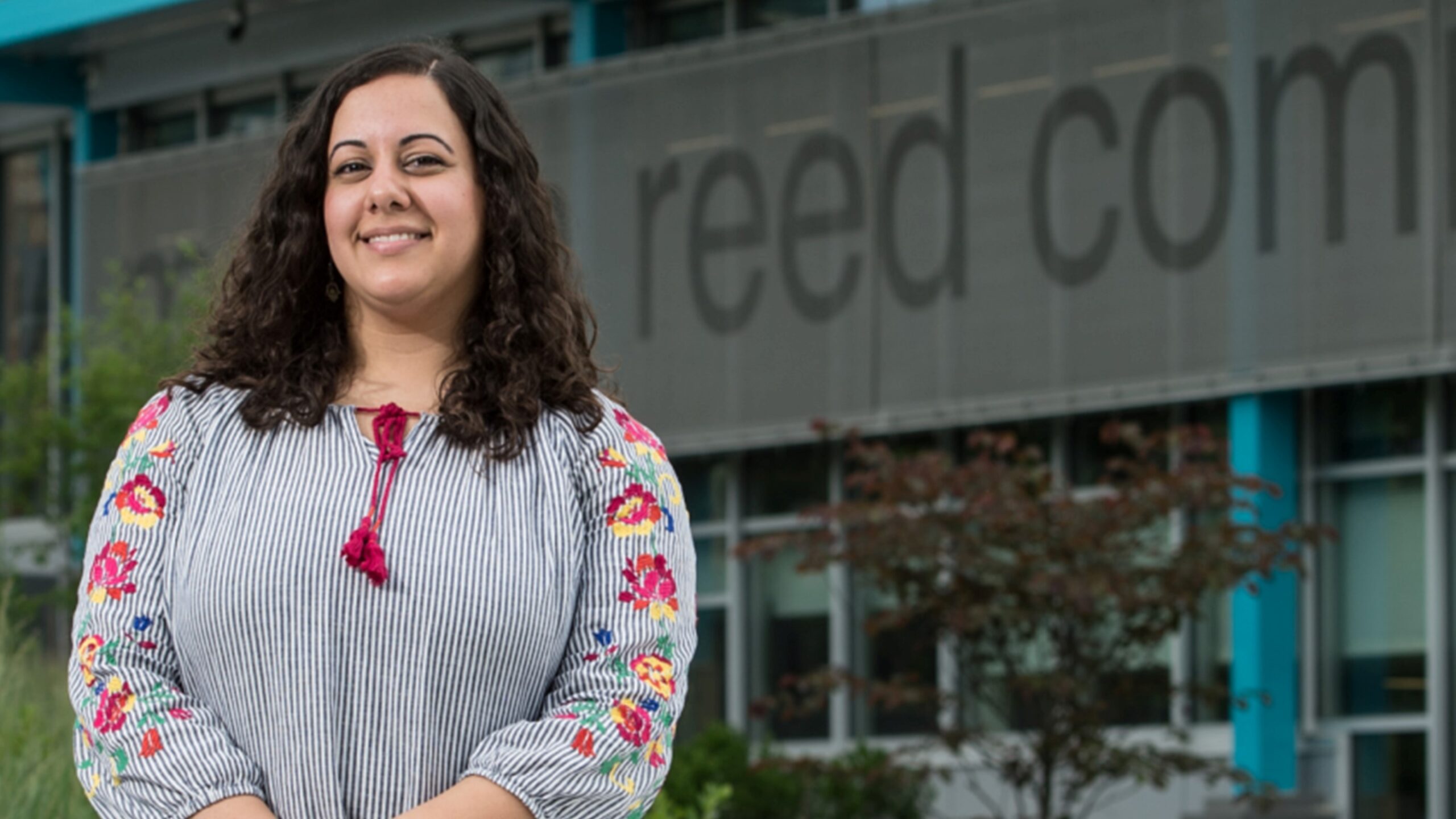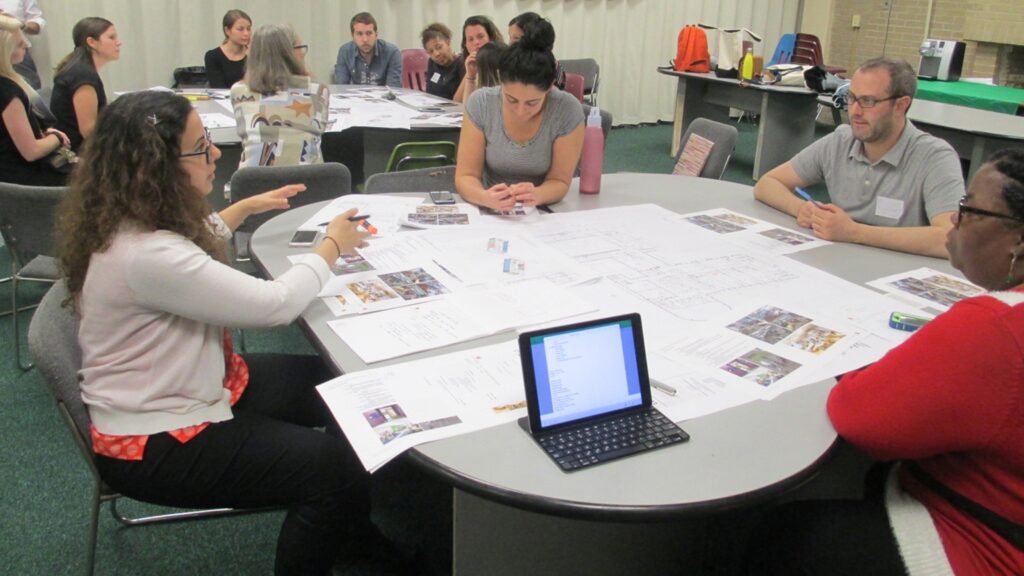
Jenine Kotob, AIA, is the Senior Director of Career Advancement at The American Institute of Architects, where she aligns the national chapter’s equity, diversity, and inclusion agenda with the stages of—and the support required for—an architect’s journey. Before joining AIA National, Kotob was an associate architect at Hord Coplan Macht’s Alexandria office, specializing in educational design and, for four years prior to HCM, a project architect with Quinn Evans. Kotob holds a bachelor’s degree in architecture from Virginia Tech and a master’s degree in architecture from the Massachusetts Institute of Technology, and she says that the architecture profession and its academy are enriched when we create a sense of belonging for everyone. “Everyone benefits when you include all of the voices that are underrepresented and that are at-risk for not being heard,” she says.
How do you work through AIA to make an impact on the profession?
As a practicing architect, for a long time, I kept my personal identity separate from my professional identity. I had a master’s degree from MIT in the Aga Khan program, but it didn’t seem relevant to the work I was doing as an architect, so I asked myself how I could blend my passion for architectural workforce issues with a pathway forward. At AIA, I look at the entire career journey of the architect—from youth to K-12 to higher education to leadership in practice to retirement. I got into this line of work because I believe it is important to look at how to support professionals at every stage of their career—and a big cornerstone is integrating EDI, justice, and belonging as a lens. Who’s missing? Who’s not being represented? How can my work support them to remove the barriers for advancement?
What is the ethical imperative of architecture?
As architects, I think we hold an awesome responsibility where we enter into communities as guests—and we need to reframe how we work with communities and we need to implement participatory design. If we exclude people in that process, we create barriers. So, if you’re not designing with equity in mind, you are designing inequitably inherently. When you look at stakeholders, it has to include subject matter experts as well as the community members that will use a project we’re working on. I am of the mindset that architects must shed our egos and embrace the expertise of others. I believe we need to begin with architectural education so that this idea is incorporated into the curriculum—community engagement—because it’s not just a lens. It’s a foundation for design. It’s so rare for communities to bring people together across neighborhood lines to overcome deep seated conflict. But, design can be a tool for community healing.

Why is justice a necessary design ethic?
When it comes to justice, I believe that means we must look at investments, in its various modalities. Like how to support a community’s ability to be resilient. I think it starts by looking at systems of inequity that have led to disenfranchisement. It is known that the physical environment can say a lot about one’s life expectancy and future – danger and harm is tied to an individual’s zip code, ethnicity, gender. We have the data and we have the research to see this happening in real time, and as architects we have the control to understand that data and do something with it. From a social justice imperative, I think about the gaps in a community’s neighborhood—do they have access to healthy food, to shared public spaces for children, and so on. So, from a design perspective, an architect’s work goes beyond the job site and it extends into the community itself. As an architect, I cannot continue to ignore the invisible boundaries and systems that control areas that we live within.
We hear a lot about “leadership” and “equity” in the profession, and the responsibilities that those words represent. What do you think really prepares an architect to assume those responsibilities on the various pathways to licensure?
I see this as an opportunity for businesses and their firm leaders to move beyond the bottom line as the sole driver for their success. I look towards the research on multi-generational workplaces, which shows that the incoming workforce wants alignment between where they work and the values they hold. We live in a world where everything is integrated—working in virtual and hybrid settings where the old lines of home and office are blurred. And based on the data, we know students exiting architecture university settings constitute the most diverse workforce we’ve ever seen. So, if architects want to lead a world-class profession, they need to keep up with technology and healthcare and other industries. For this next generation’s leaders, they will bring the transformation we need—and I’m so inspired by what I see. In terms of career pathways, I think it is important to think about how students are being prepared. In school, architectural students can be prepared for an increasingly complex world by being given opportunities for exploration and curiosity. When combined with design-thinking, electives like economics, public health, planning, and other disciplines outside of traditional architecture studios, can strengthen our students to be greater leaders in the world.
What are some concepts that you think the next generation of architects will have to redefine or, in some cases, define for the first time?
I think that—in workplaces specifically—intercultural competencies are going to be critical to understanding identity. In society, we don’t talk about identity in a nuanced way and what it means. We don’t break down those monolithic understandings of people as much as we should. For instance, BIPOC is a term and a buzzword, but it doesn’t say a lot. How do we talk about the real complexities that make up a lot more people’s sense of identity, and how that creates common threads? Once we answer that, then we can attack the challenges—that’s how we move from aspiration to action. I’m worried about diversity, equity, and inclusion as a unified concept because it’s riddled with challenges when it comes to implementation.
This interview has been edited for clarity and length.
William Richards is a writer and the Editorial Director of Team Three, an editorial and creative consultancy based in Washington, DC.
